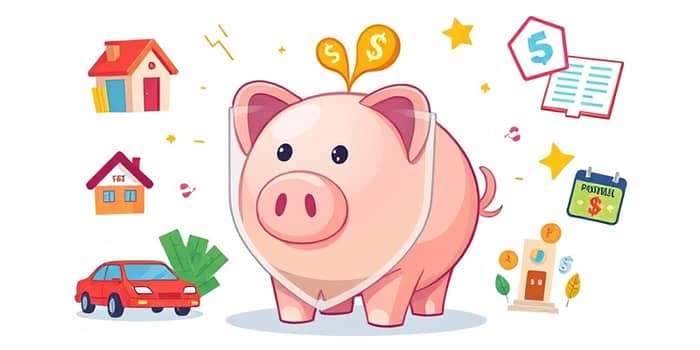
Every journey toward financial well-being begins with a single, powerful step: preparing for the unexpected. An emergency fund can transform anxiety into confidence and help you weather life’s storms without derailing your future.
By understanding the purpose, benefits, and practical steps to build a robust safety net, you’ll gain the tools to protect yourself and your loved ones from unforeseen challenges.
An emergency fund is a dedicated savings or cash reserve set aside exclusively for unexpected costs. Instead of relying on credit cards or loans, this reserve acts as a financial buffer against crises.
Its core purpose is to cover sudden expenses—whether medical bills, car repairs, home maintenance, or income disruptions—without forcing you to tap into general savings or incur high-interest debt.
Building a cushion of readily accessible cash offers far-reaching advantages. First, it promotes peace of mind and financial security by ensuring you’re never caught unprepared.
Second, it helps you avoid borrowing at steep interest rates. With credit cards often charging well over 22 percent APR, relying on debt for emergencies can lead to long-term financial strain.
Third, having funds at the ready grants you freedom and flexibility for life decisions. Whether pursuing a career change, starting a business, or caring for a loved one, you’ll face fewer constraints.
Finally, an emergency fund reduces stress by shielding your mental and emotional well-being from financial anxiety. Given that 56 percent of U.S. adults couldn’t cover a $1,000 surprise expense, and over 35 percent would struggle with a $400 bill, the need for a safety net is clear.
Experts agree that the ideal emergency fund ranges from three to six months of living expenses. However, your personal target depends on your circumstances—dependents, job stability, and income volatility all play roles.
For example, if your monthly expenses total $2,000, then three months equates to $6,000, and six months to $12,000. These figures reflect average re-employment timelines and risk levels.
Remember, it’s normal to withdraw and then replenish your fund when emergencies occur. The key is to consistently preserve your buffer to prevent debt spirals.
Starting from zero can feel daunting, but incremental progress adds up quickly. Follow these foundational steps:
Distinguishing true emergencies from routine or optional expenses keeps your fund intact and ready for the most critical situations.
Planned expenses—vacations, routine checkups, gifts—should be funded from separate savings accounts to preserve your emergency cushion.
Liquidity is paramount. Store your fund in accounts that offer quick, penalty-free access. Ideal options include:
- High-yield savings accounts
- Money market accounts
- Traditional savings accounts with no withdrawal restrictions
Avoid investing these reserves in stocks or illiquid assets, as market fluctuations and withdrawal delays could jeopardize your immediate access.
Many people find saving challenging, but simple strategies can sustain momentum. Visualize your goals with tracking charts or apps, celebrate milestones, and remind yourself of the peace of mind you’re building.
Set small, achievable weekly or monthly targets to avoid feeling overwhelmed. As you see the balance grow, your confidence and commitment will strengthen.
Adapt your plan as life evolves. Marriage, parenthood, career changes, or health developments may necessitate increasing—or occasionally reducing—your savings target.
Empower your journey with reliable tools and guidance:
By integrating these resources into your routine, you can streamline the process and stay motivated as your fund expands.
Building an emergency fund is more than just a financial chore—it’s an act of self-care and future planning. When you have a robust safety net, you’re free to pursue opportunities, weather hardships, and maintain your well-being without constant worry.
Take the first step today. Even a small contribution will set you on the path toward lasting security. Remember, the journey of a thousand miles begins with a single deposit.
References













